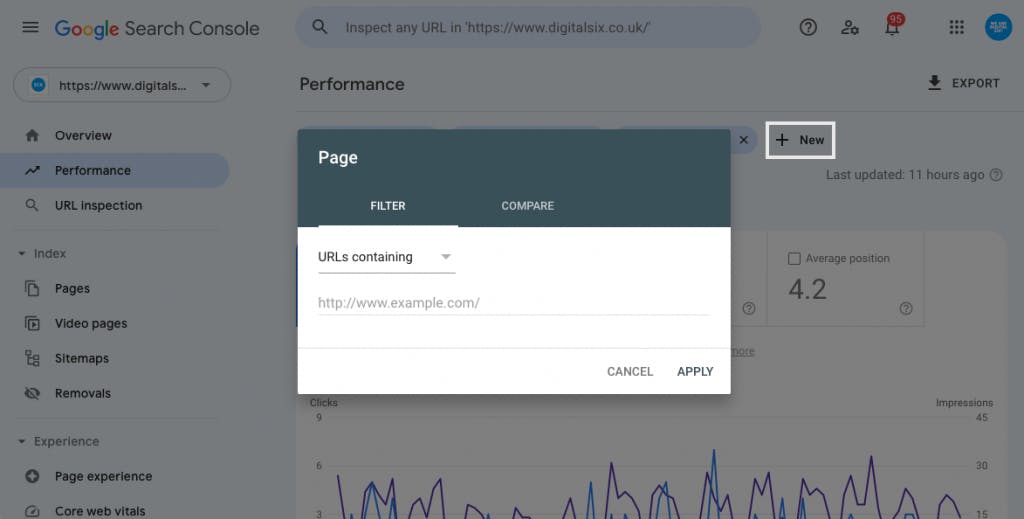Our Ultimate Guide To Black Friday Marketing

The biggest shopping day (or week, or month) of the year is coming. Is your ecommerce business prepared?
Love it or hate it, Black Friday is here to stay and it’s commercially crucial for many brands. You can choose to take part, or make a stand by not playing along – but ignore it at your peril.
To help you navigate what is one of the most critical trading times of the year for many online retailers, we’ve put together our top tips for the best ways to play Black Friday in 2024. Help your business to capitalise on all the opportunities that the event can bring, while staying ahead of the competition and avoiding the common pitfalls.
Throughout this guide, we’ll show how to generate high-quality Black Friday traffic, convert that traffic into customers, and turn customers into valuable brand advocates.
Contents
- How Black Friday is changing
- Creating a good Black Friday sale
- Generating high-quality traffic
- Convert that traffic to customers
- Create brand advocates from customers
- Evaluate your performance
Chapter 1: How Black Friday is changing
Following the unpredictable events of 2022 as we transitioned into a post-pandemic world, in 2023 more people shopped during Black Friday than ever before.
Consumer spend across the weekend was up 5.6% year on year, as reported by Adobe Analytics, with a total of £3.45 billion spent online in the UK. However, footfall to stores across the UK was down 1.6%, while Barclaycard transaction volumes declined by 0.6% YoY.
Amidst the cost of living crisis, over half of Black Friday shoppers said financial concerns meant they relied on promotions more than usual. In 2024, with economic pressures still weighing heavily on consumers, businesses can expect increased demand for real value and substantial deals when it comes to Black Friday.
Is Black Friday still worth it?
It’s certainly legitimate for ecommerce brands to question whether they want to be involved in Black Friday at all. If you do choose to be involved, there’s more call than ever to present real value in your offer.
If you choose to opt-out, there’s a lot of creative ammunition to build an emotive counter-proposition that looks to capitalise on consumer sentiment.
In 2022, we saw the balance of Black Friday shift back toward the highstreet, with footfall increasing to physical locations as traffic to ecommerce sites dipped.
2023 saw things reverse and online revenue increased by 6.94% year-on-year, showing that consumers are still willing to spend when they can see value, despite tighter budgets.
In 2024, there’s definitely opportunities for online retailers to see Black Friday success, with shoppers being more tactical with their spending and increasingly looking for the best deals. However, with rising marketing costs and more brands competing for consumer attention, there’s even more pressure on ecommerce businesses to find ways to stand out in the crowded market.
Chapter 2: How To Create A Good Black Friday Sale (Standing Out In A Crowded Market)
In order to cut through the noise of Black Friday, you’re going to need solid a mixture of some key elements:
- A good offer
- The right creative
- Perfect timing
- Optimised marketing channel execution
Your Black Friday offers
With the pressure on consumer pockets this year, and a huge amount of competition, there’s more call than ever to hang your Black Friday on one or more genuinely strong offers. The backlash against a poor quality offering could become stronger as customers look to maximise value for money.
The days of passing off the same old sale stock and meagre discounts as a unique Black Friday offer may be behind us.
Businesses who buy and sell products need to buy early, at a level of discount that allows you to maintain a decent margin on your Black Friday offers.
For manufacturers, with more margin to play with, there’s usually scope to offer a strong discount or added value proposition.
In both cases, it’s an opportunity to consider customer lifetime value, and ask yourself if deeper discounts could offer more business value than you might think at first.
There are great opportunities for new customer acquisition during Black Friday due to the sheer number of consumers active in the market. If you can optimise your marketing towards new customers and ensure that your service and post-purchase journeys are on-point, there’s the opportunity to drive long-term customer value from low initial margins.
Top tip: Spend some time figuring out the potential customer lifetime value of Black Friday sale customers.
Remember, our ecommerce marketing services have been designed to help businesses like yours fully realise their Black Friday profitability potential.
Standing out creatively
Even with some meaty discounts or added value packages on offer you may still struggle to cut through the noise. It’s always difficult to consider ways that you could further differentiate your offer creatively, but if you can think of even subtle ways to make your message stand out, it can help to improve your chances of success. The cleverer the better, of course.

Spin your creative to face directly into the pressures that consumers are facing, and how buying quality is the answer. Maybe your deals are great all year round, and you don’t need to jump on the bandwagon when everyone else does.
You don’t have to go full-Patagonia and give away the entire day’s profit, but there are creative ways that you can put two fingers up to the event, or put your arms around a customer at this difficult time. You stay busy and relevant when everyone else is discounting.
Timing your Black Friday sale
A crucial consideration in any Black Friday campaign is when you start it and when you end it. If you’re taking part, then a good minimum can be to run at least Black Friday through to Cyber Monday, although many brands choose to extend further than that.
One thing is certain, Black Friday is more than a single day. In 2019, Google showed that search queries for Black Friday begin as early as October.
The competitors in your niche can provide valuable insights that can inform your choice. When do they traditionally kick things off? Do you want to match or better them? Or are you confident enough to sit back and let them get going too early?
It’s a fine balancing act. On one side, you may want to make the initial impact when competition is less fierce. On the other hand, go too early and you risk running into promotional fatigue by the time most consumers are buying.
Learn about how we generated bumper Black Friday sales for Wonderland Models in our case study.
Chapter 3: Generating high-quality Black Friday traffic
Most digital marketing aims to generate high-quality, meaningful traffic for your store or website and a good Black Friday marketing strategy aims to do just that.
Unfortunately, the difference with Black Friday marketing is that you want to generate a lot of great traffic, in a very short period of time, when everyone else is doing exactly the same thing. This can make it feel like a daunting task for even the most seasoned digital marketing teams.
It’s best to create your Black Friday channel strategy like any other:
- Understand your product
- Understand your customers and target audience
- Understand your position in the competitive landscape, then
- Invest in the channels that will best tell your story across the whole customer lifecycle.
It’s more than likely (for an ecommerce business) that you’ll be include the SEO, PPC, Social & Email – so here are a few of our top tips for each.
SEO for Black Friday
TL;DR: Optimise your category and landing page for relevant keywords, start early, keep URLs live all year.
Optimise your Black Friday landing pages for relevant keywords
Make sure your category and landing pages are optimised for the relevant Black Friday keywords like “Black Friday deals”, “Black Friday sales”, etc. This should be a given, but it’s worth repeating.
You can use any SEO tool (or Google AdWords Keyword Planner if you want a free but imperfect option) to find relevant keywords and get an idea of how much traffic they generate.
Look out for specific terms in your niche and consider how competitive they are, optimising for those which you’ll have the best chance of ranking for.
Start your Black Friday early
All SEO takes time – remember that you’re relying on search engines to find your content and display it to the right searchers. Build out your Black Friday category pages in plenty of time, to make sure they’re indexed and have the best chance of appearing the SERPs when the weekend rolls round.
Google Search Console and Bing Webmaster Tools can be useful to help you make sure your pages are crawled and indexed.

Consider keeping your URLs live all year round
This is more of a long-term tip, but if you want to keep your website ready for Black Friday every year, create a small number of well-optimised URLs (for both informational and commercial content) that are always available and link to your best content.
You don’t have to promote these pages all year but you’ll generate much better (and more) Black Friday traffic from organic search. Just make sure you update the content in plenty of time so it’s relevant to your visitors for the coming event.
Get in touch and see how our ecommerce SEO services can turn the dial on your next seasonal sale.
PPC for Black Friday
TL;DR: Plan early, use existing campaigns, bid harder, cut wasted spend, use remarketing.
Plan and get started in plenty of time
Like SEO, paid search takes time to get right. You need to have a solid plan in place for what you want your campaigns to achieve, and for the likes of Search and Custom-audience-targeted Display, you need to research the relevant niche keywords you want to target.
Consumers will start thinking about and planning their Black Friday purchases weeks and months ahead of time, so you should consider what you can do to generate interest and raise brand awareness amongst your target audience during the run-up.
Perhaps you could start your Black-Friday-specific campaigns early, pointing them at a Black Friday landing page which – while it might not have any live product on it yet – builds hype and collects email / sms leads ahead of your planned launch.
Similarly, you can start to serve targeted Black Friday teaser or general brand awareness Display and/or Video ads ahead of time. The key aim here is to have your brand fresh in the mind of your target consumers at the point that they start to take action.
Consider your campaign structure carefully
While dedicated Black Friday campaigns can keep things nice and clean from a targeting and reporting perspective, you should consider how performance is often best in established campaigns where AI has had time to learn.
It’s important to think about how you can weave your Black Friday creative and strategy through existing campaigns, and how these will complement your shorter-term tactical campaigns. Think about Black-Friday-specific extensions, ad variants, budgets and bid strategies as well as exclusive Black Friday campaigns.
Be prepared to bid harder and spend more
Through your Black Friday sal period you’ll want to make sure your campaigns are prepared to cope with the increased competition and demand. If you’re running manual campaigns, you’ll need to be ready to adjust your bids appropriately.
If you’re using more automated bidding strategies, you should consider how the AI will respond to the increased demand.

Consider these factors:
- The margin available in your Black Friday offers versus longer-term Customer Lifetime Value.
- How long your key trading period will be.
- Longer-term promotions might mean that AI has longer to adjust and maintain your desired targets.
- Shorter and sharper key trading periods may require a change of approach.
If you’ve got a particularly compelling offer, you could consider moving to position-focused or traffic-focused bidding models, giving the AI more free-rein to fight harder for market share. A great offer will vastly increase the chances that traffic will convert and filter through to results in the days and weeks following the event.
Cut out wasted spend
You’ll need to keep a close eye on the search terms that are triggering your campaigns, particularly if you’re using manual campaigns and broad match or phrase match keywords.
Keeping on top of your negative keywords will ensure that the maximum proportion of your budget goes towards competing where it matters most.
Digital Six can help take your ecommerce PPC campaigns to the next level of profitability.
Bring customers back with remarketing
Remarketing isn’t dead yet even if has its many challenges. It can be a great way to coax customers back to your site during their research phase.
We know that consumers like to shop around for the best deals, and this year that’s likely to be more pertinent than ever.
Remarketing Display can bring customers back to your site and keep them fresh in your mind, while bidding harder on those returning customers who are more likely to convert is a solid approach for those of you using campaign types that give you the capability.
Paid Social Media Marketing for Black Friday
TL;DR: Make it look good (invest in assets), start early, consider various platforms, consider influencers.
Make it visually appealing
One of the strengths of paid social is the range of visual formats available to you – from simple image ads, through carousels to videos and stories.
Each will resonate to a greater or lesser degree with your target audience, so all should form part of your experimental mix, but the common factor amongst them all is that they’re visual.
Whether you choose to play into Black Friday or against it, paid social media marketing can be a key channel for telling your story, building brand awareness and driving sales. But as with everything Black Friday, you’re going to need to find a way to stand out visually.
Taking the time to invest in assets can really help when it comes to cutting through. Aim for a considered and clever creative, quality visual assets in a range of formats, and trial video wherever you can.
When thinking about video, remember that you don’t necessarily need a particularly high production value. Giving your videos a user-generated feel can actually make your content sit better within the platforms, grab attention and increase engagement.
Start early and generate hype
As with every channel, getting active nice and early will ensure that you’re ahead of the game. Consider ways that you can encourage engagement and build hype in the run up to the event, to ensure that your brand is in mind when the time comes.
You’ll often be able to remarket to customers based on social media engagement as well as website visits. Feeding the algorithms with plenty of engagement ahead of time is a strong tactic.
Platforms like Facebook also offer really slick lead generation ad formats, which can be super effective at generating leads ahead of the event to feed your email activity.
Consider new platforms
While a lot of businesses tend to (for good reason) target the Meta platforms of Facebook and Instagram for their paid social activity, these platforms will be a crowded space when Black Friday rolls around.
If your customer base allows it, and you haven’t yet branched out into alternative social media platforms then Black Friday can be a great time to do this.
If you find yourself struggling to cut through or generate a return in Meta, then platforms like TikTok, Pinterest and Reddit can provide a valuable outlet through which to widen the net.
Leverage influencers to add reach and authenticity
For platforms like TikTok and Instagram in particular, leveraging influencers can be a powerful route to success. Influencers can provide a fast-track to increased reach and authenticity, particularly if you’re targeting the lucrative Gen-Z market.
There are a whole host of partnership arrangements open to you, from simple discount code sharing, to product unboxing, tutorials, reviews and other general brand advocacy work. These partnerships can provide a valuable source of content for you to reuse and repurpose as a brand too.
Just be sure to use trackable tactics such as unique discount codes and UTM links to assist with your attribution efforts.
Organic Social Media Marketing For Black Friday
TL;DR: Build anticipation, use social media to nurture relationships, offer personal rewards, plan posts, use all formats, update key profile information.
Build anticipation and engagement
As well as using paid ads, you can use your organic social efforts to promote and build hype around your Black Friday sale. As with all things organic though, you might need to work a bit harder than just simply shouting about your discounts.
Think about unique ways that you can steer the conversation towards Black Friday without always explicitly shouting about it.
Build your brand and relationships
Everything you do in organic social should add value to the lives of your followers and prospective customers. That value goes beyond the simply commercial. It can be entertainment value. Informative educational value.
Whatever you do, ensure that it enhances the lives of your customers in ways that are wider than the traditional 100% dry hard-sell. Use this key time as a better one than ever to develop a deeper relationship with your customers through social, so that when the time comes, they have a preference for your brand’s offer over another.
Reward your followers
One surefire way to help your committed social followers and engagers feel valued is to reward them with exclusive offers and discounts throughout the Black Friday period.
Consider providing them with advance access to offers if additional discounts or promotions aren’t an option.
Plan and schedule your activity, while remaining responsive
Black Friday is usually one of the busiest times of the year for any Marketing team, so the more you can get ahead – ideate, work-up creative assets, and schedule your activity – the better.
This will allow you a bit more headspace and freedom to react to moving trends and customer engagement across the crucial trading timeframe.
Make use of all the unique formats at your fingertips
As with paid social, you’ve got a lot of unique visual formats and ways of interacting with your customer across social platforms that you won’t find elsewhere. Get creative and bring your Black Friday story to life in different ways across these different touchpoints. Tailor the message to the format for the biggest impact.
Update key social media profile information
Black Friday will be one of the busiest times of the year for your social channels as well as your website, so make sure that everything’s up to date.
Get your profiles and contact details up to date, set up your social shops, and ensure you’ve got your team and monitoring tools in place to make the most of the increased traffic and interest.
Black Friday Email Marketing
Unfortunately, revenue per email is actually better on an average day than it is over the Black Friday and Cyber Monday sales. Your email performance is likely to be poorer than it normally would be, but there are ways to make it work really well.
TL;DR: Generate leads beforehand, segment your list, plan and elevate campaigns, test, automate.
Invest in lead generation
If you want to make the most of Black Friday with email marketing, one key element is the size of your list. As we discussed earlier, a lot of the social channels have user-friendly lead generation ad formats which you can combine with your hype-building social activity to build an even bigger list.
Your website can be a valuable source of leads too, so ensure that you’re driving a portion of that traffic to lead generation forms too.
Consider offering unique subscriber discount codes or advance access to email subscribers to maximise sign-ups and revenue.
Segment your email list
Segmentation is the process of dividing your list into smaller groups, based on factors like where they live, what they’re interested in, and what they’ve bought from you before.
This allows you to send emails that are more relevant to each group, which means people are more likely to convert. And it really works.
According to Klayvio’s research (of 1.5 billion emails) you’ll see higher open rates, and higher click-through rates. What’s more, the more targeted segments generated ~35% more revenue compared to the less targeted communications.
Consider trying to enhance your data ahead of Black Friday to allow for increased segmentation, if your list doesn’t already support it.
Plan your email marketing campaigns
Start planning early (a running theme) and plan your multi-touch campaign schedule to cut through the noise and fully maximise revenue potential. Consider ways in which you can get the message out as early as feasibly possible.
People will be bombarded with email marketing messages closer to the date, so if you can get your message in their inboxes a week or two before, you’re more likely to grab their attention. Be aware though, too early and you risk being ignored altogether.
Make your email campaigns stand out
A good omni-channel strategy should consider how your core message will stand out across all channels, but the email inbox is one of the most challenging places to try and achieve that. Strong, personalised subject and preview lines, eye-catching images, and a clear call-to-action are all part of the mix.
It’s a challenge, but really try to think of ways to differentiate your message from that of the other brands and competitors that will be landing at the same time. Personalisation can be a great way to do that.
Test, test, test
While your first instinct might be to batch and blast your campaigns to your whole list or individual segments. Remember that there’s rarely ever one clear way of doing things.
Try wherever possible to test and learn with smaller cohorts before sending the most effective creative executions to the remainder of your lists. Subject line testing should be included as an absolute minimum.
Follow-up with automation
The days of email being simply about batch-and-blast are thankfully slipping into the past for many retailers – with more than ever turning to automation to deliver rich and personalised journeys. Black Friday lead generation and new customer acquisition provides a huge opportunity to maximise longer term value through effective automation and follow-up.
If you haven’t already, then consider the basics of basket abandonment, new subscriber welcome, post-purchase, and birthday or perhaps re-engagement prompts. Check out Klayvio’s guide to email marketing automation basics.
Chapter 4: Convert Your Traffic & Prospects To Customers
You shouldn’t think about digital marketing without thinking about conversion and conversion rate optimisation (CRO). You’ve gone to a lot of trouble to stand out from the crowd and drive traffic to your website, you need to give it a good chance to convert.
Conversion has a multitude of moving parts. The pricing of your product and strength of your offer is obviously key, but all the other usability and user experience best practices that apply to every ecommerce business can have a huge impact at Black Friday.
Make sure your site user experience is up to scratch
You’ll need to consider each stage of a customer’s journey from landing on your site to completing a purchase and optimise each stage if you want to maximise the value of your traffic. Some key areas are:
- Your site must make sense and be easy to navigate.
- You should have plenty of reviews and social proof (trust signals).
- Your cart and checkout must be streamlined.
- You should offer multiple modern payment methods and options, including financing and payment-splitting on higher value items.
Make sure your customer experience is on point too
Black Friday isn’t the time to realise you’ve got issues with business operations. If anything, it should be a smooth process that takes advantage of high demand and provides a great brand experience for new customers, helping to turn them into long term advocates.
Your customer service team should be prepared for an influx of enquiries and complaints. Make sure they have the resources they need, and that your FAQs and help content are up to date.
Review other essential processes like order fulfilment. Ask yourself:
- Can orders be fulfilled quickly and efficiently at scale?
- Are there any potential bottlenecks?
Investigate and make the relevant changes. A good ecommerce consultant can help you spot these issues before they arise and help you implement the right solution.
Align your online and offline channels
While the Black Friday pendulum has swung towards the online store in recent years, with the return to post-pandemic normality, it’s likely that the high street’s share of revenue will recover.
However, that doesn’t mean consumers won’t continue to research and make purchase decisions online. Even if the ultimate conversion takes place in store, much of the awareness and consideration phase can still be won and lost online.
If you have a high street presence, it’s worth doing everything you can to align your online and offline offering to allow customers a seamless omni-channel shopping experience. Consider using tools like Local Inventory Shopping ads to let customers know if products are available for them to collect locally.
You should also consider that this is a “grey area” when it comes to investment, attribution and tracking. Investing more heavily in locally-targeted ads can help to drive footfall and offline sales, while you should expect the online ROAS of these campaigns to be naturally lower than your purely online campaigns.
Top tip: Uploading offline conversion data into your ad channels can help to fill attribution gaps.
Set your store up to handle the increased traffic
On Black Friday, your website will (hopefully) see a lot more traffic than usual. Depending on your platform and hosting solution, this increased traffic can put a strain on your servers and underlying infrastructure, which can cause your site to slow down or even crash.
To avoid this, you should take some steps to ensure that you’re set up to handle the increased traffic. Here are a few top tips to ensure that your website is up to the task…
Use a content delivery network (CDN) to deliver your content
A CDN is a system of distributed servers that delivers webpages and other web content to users based on their geographic location. By using a CDN, you can offload some of the strain from your server, and ensure that your content is delivered quickly to users no matter where they are.
Optimise your website for speed
A slow website is a surefire way to lose potential customers on Black Friday, particularly when it comes to crucial mobile traffic. Make sure your landing pages and site in general are as fast as possible by optimising your images. Consider using tools like caching plugins to streamline the code on key pages.
Bonus tip: A Progressive Web App and headless ecommerce architecture can be a great way to deliver lightning-fast online retail experiences. Learn more about them here.
Use a cloud hosting service
Cloud hosting services are a great way to increase the scalability of your website. They allow your dev team to quickly add more resources (such as CPU and memory) to your website during periods of high traffic, without having to make any changes to your code or architecture.
Make sure you’ve got available developer resource
If something does go wrong on Black Friday, you’ll want to have a dev team ready and waiting to fix any issues as quickly as possible. Make sure you’ve got adequate staffing levels or that your development agency are available on-call during the Black Friday period.
Chapter 5: Turn your Black Friday customers into long-term brand advocates
Just because the sale is over, doesn’t mean your work is done. Black Friday, and the increased levels of new-customer acquisition that it brings, offers the opportunity to create new long-term customer value that will benefit your business for years to come.
Here are some (relatively) quick and easy actions to explore after the rush subsides.
Set up post-Black Friday retargeting campaigns
You can use analytics or ads tracking to create retargeting audiences of people who visited your site during the Black Friday sale period. You can then create specific retargeting campaigns for these shoppers, driving them back to your site through the crucial Christmas trading period and beyond.
Give them something to come back for
Offer your Black Friday customers the opportunity to re-engage with your brand, or even return and shop from you again. You could do this with discount codes in their orders, or prize draws that encourage social sharing. Get creative and think of ways to turn that initial sale into repeat purchases.
Encourage them to share
A referral scheme can be a great way to encourage customers to share the love they’ve got for your brand. Social proof is a powerful tool in the box of any ecommerce brand, and a personal recommendation can be one of the best forms of social proof, bar none.
There are several off-the-shelf referral solutions available which can easily integrate into most ecommerce platforms and automate much of the process for you.
Survey your customers
Customer Insight can be an incredibly valuable tool for helping you to develop and continually improve your strategy. If Black Friday is a hugely commercially-important time for your business, then it could be the ideal time to carry out a customer survey.
Aim to learn what you can about how your customers rated your offering, creative, marketing and service efforts.
Once the dust has settled…
Evaluate your Black Friday performance
Once all’s said and done, you should always take the time to look back at business, customer, channel and campaign performance. Consider particularly the impact of different attribution models here, while looking to extract meaningful trends and establish an ROI of the cost of ad spend and offers.
This will help you to understand what worked well, and what you can improve for next time. And if you’ve chosen to survey your customers, then this is the ideal time to review, while everything’s fresh in your mind.
Planning for next year’s Black Friday
Once you’ve taken a close look at your Black Friday performance, start planning for next year. Ask yourself:
- What worked well?
- What could you improve on?
- How can you make sure your website stays up, your digital marketing channels generate traffic, and your customers stay happy?
With a little bit of forward planning, you can make sure that next year’s Black Friday is even more successful than this year.
Over to you…
That’s a whistle-stop tour through what can be one of the biggest topics in ecommerce, but we’d love to know your thoughts. Anything you feel we’ve missed? Need help with your own ecommerce marketing? Get in touch today for a free no-obligation chat.
Some useful (related) resources
Learn how to get your business on Pinterest.
PPC and Shopping case study for Celtic FC's ecommerce store.
Learn all about SEO for ecommerce product pages in our guide.
Get your ecommerce business ready for the next Boxing Day Sales.






